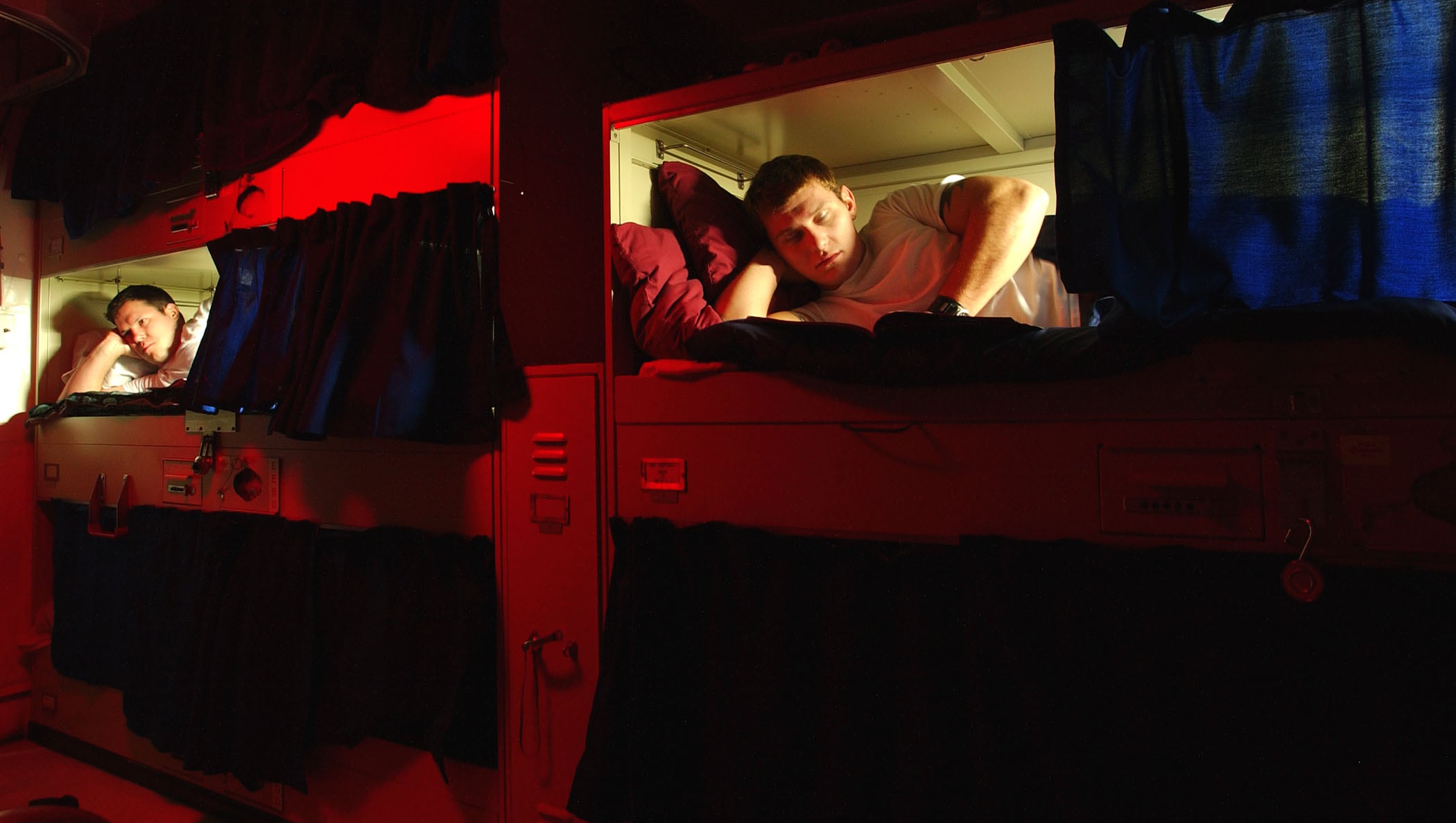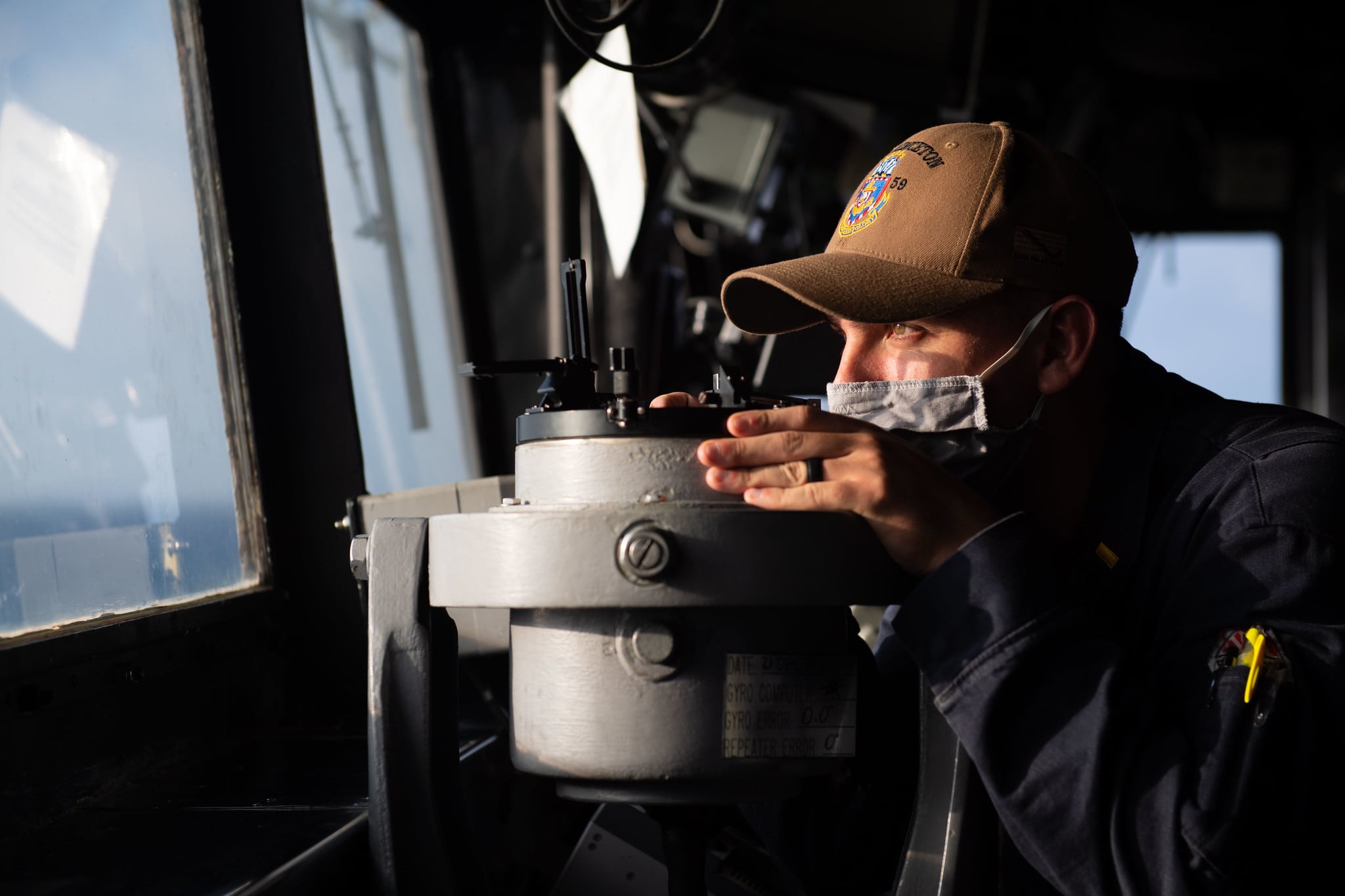More than six years after sailor fatigue was found to have played a role in the fatal Fitzgerald and John S. McCain destroyer collisions, the Navy’s surface fleet is still struggling to ensure that crews get adequate rest, according to a government watchdog report released last week.
The Government Accountability Office report found that the sea service has implemented some reforms, but other steps have not been taken.
Sailors reported manning shortfalls and uncomfortable berthing mattresses as main contributors to their fatigue in an internal Navy survey last year, according to the GAO report.
However, the accountability office reports the Navy has conveyed no plans to fix either of those issues in the near future.
While sailors have reported how uncomfortable mattresses are hindering adequate rest, Navy officials provided few solutions to investigators.
RELATED

“Navy officials told us that this problem does not have a Navy resource sponsor willing to examine it further and mattress improvements across the fleet,” the GAO report states. “Officials added that they have received approval to replace mattresses every three years instead of every five years to help improve conditions, but the discomfort issue remains.”
When a ship isn’t properly manned, everyone has more work to do and less time for sleep. The Navy has “routinely assigned” fewer sailors to ships than its own workload studies indicate are needed to safely operate the vessels, according to the GAO.
The watchdog cited Navy officials saying the service is “developing a 15-year plan to reverse enduring personnel shortfalls and to fully crew the fleet.”
But the GAO report warns that until the Navy adequately mans its surface fleet with qualified sailors, “personnel shortfalls will likely continue to be a leading factor causing inadequate sleep and sailor fatigue.”
A lack of sleep isn’t just a quality-of-life issue. The Navy’s own studies have found that sailors’ ability to safely do their jobs decreases with less rest, and that lack of consistent sleep can lead to a sort of on-duty drunken stupor.
“Sailor fatigue poses a considerable risk to the safe and effective operation of Navy ships,” a 2021 GAO report on the issue warned.
Naval Surface Forces said in a statement that, on average, the surface fleet has 14 more sailors per ship than it did in the summer of 2017, when the Fitzgerald and John S. McCain mishaps killed 17 sailors.
“The operational tempo and demands of the Surface Force will continue to remain high,” the command said. “The readiness and wellness of our sailors remain our top priority and we are actively addressing challenges with sailor fatigue through a variety of measures ranging from force manning to technological applications that help manage crew rest and optimize human performance.”
The GAO also reported that the Navy has not accounted for the “additional sailor workload” that comes with the continued rollout of the Ready Relevant Learning training initiative, which is changing how and when sailors learn at different points throughout their careers.
RELATED

To date, the Navy has also failed to fund the expansion of two pilot programs that were used to help underway commanders make decisions and monitor sailor fatigue, the GAO report states.
At the same time, the GAO reports the Navy has made progress on several other fatigue-related fronts.
It now requires systematic collection of sailor fatigue data and has revised guidance for reporting crew sizes.
The sea service has also established “risk-based crewing targets” and used crew requirements to forecast future personnel needs, according to GAO.
Still, the challenges of sailor fatigue, and the dangers of a dozing sailor, remain in the surface fleet.
In March, the Navy reported to Congress that sailors continued to fall short of required sleep hours, with the surface fleet averaging roughly five hours and 15 minutes a day, below the goal of giving sailors at least seven-and-a-half hours to sleep per day, according to the watchdog report.
“Fully implementing GAO’s recommendations will help the Navy address these obstacles,” the GAO report states.
The GAO first examined the Navy’s fatigue management policies in May 2021 and found such policies were inconsistently applied and that just 14 percent of officers reported getting adequate sleep.
The Fiscal Year 2022 National Defense Authorization Act required the Navy to implement the GAO’s recommendations.
But to date, three of the eight recommendations were partially implemented, while another directing the service to take actions to “address the factors causing sailor fatigue and inadequate sleep” has not been implemented at all, according to the GAO.
The Navy’s report to Congress on sailor fatigue earlier this year noted that most surface force ships had implemented fatigue and endurance management aboard ships and were factoring fatigue and crew endurance into risk management, with “Go/No Go criteria implemented.”
That Congressional report also noted that fatigue and endurance management training had been incorporated at all levels of Navy leadership training.
But “officials could not provide documentation” to confirm that these reforms had actually happened, the GAO report states.
“Because the Navy’s report to Congress states it has met its goals, the report did not include timeframes for doing so,” according to the GAO.
The Navy’s report to Congress stated that engineering and combat systems departments have particularly struggled with fixing fatigue issues because those departments have greater shortages of qualified sailors, which leads to manning shortages and everyone doing more work and getting less sleep, according to the GAO.
Smaller ships, such as mine countermeasures vessels, also struggle more with fatigue due to smaller crew sizes.
Geoff is the managing editor of Military Times, but he still loves writing stories. He covered Iraq and Afghanistan extensively and was a reporter at the Chicago Tribune. He welcomes any and all kinds of tips at geoffz@militarytimes.com.




